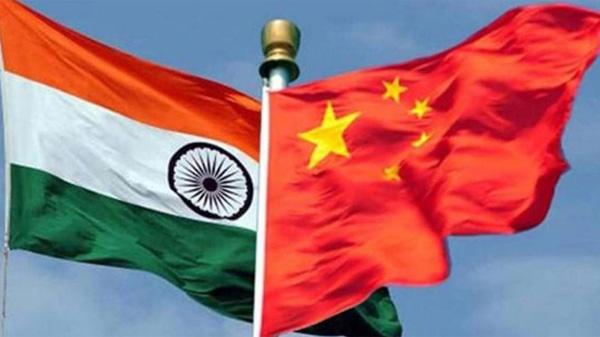Lt Gen level dialogue today
NEW DELHI, June 5:
India and China today held diplomatic talks over their military standoff in eastern Ladakh and agreed to handle their “differences” through peaceful discussions while respecting each other’s sensitivities, concerns and aspirations, and not allow them to become disputes.
The talks through video conference were held between Joint Secretary (East Asia) in the External Affairs Ministry Naveen Srivastava and Director General in the Chinese Ministry of Foreign Affairs Wu Jianghao.
Without directly referring to the military standoff, the External Affairs Ministry said the two sides reviewed the state of bilateral relations including the current developments.
“In this context they recalled the consensus reached by the leaders of the two countries, that peaceful, stable and balanced relations between India and China will be a positive factor for stability in the current global situation,” the MEA said in a statement.
It said both sides agreed to resolve differences in accordance with guidance provided by leadership of two countries, in a reference to decisions taken at the two informal summits between Prime Minister Narendra Modi and Chinese President Xi Jinping.
“Both sides agreed that in accordance with the guidance provided by the leadership, the two sides should handle their differences through peaceful discussion bearing in mind the importance of respecting each other’s sensitivities, concerns and aspirations and not allow them to become disputes,” the MEA said.
Troops of India and China are locked in a bitter military standoff in at least four areas in eastern Ladakh for a month.
Meanwhile, Indian and Chinese armies will hold a Lieutenant General-level dialogue tomorrow in their first major attempt to resolve the month-long bitter border standoff in Eastern Ladakh even as both militaries maintained their aggressive posturing in the sensitive areas in the high-altitude region.
The Indian delegation at the talks will be led by Lt General Harinder Singh, the General Officer Commanding of Leh-based 14 Corps, while the Chinese side will be headed by the Commander of the Tibet Military District, official sources said.
The talks are slated to be held around 8 am in the Border Personnel Meeting Point at Maldo in Chushul sector of Eastern Ladakh.
The sources said India was not expecting any concrete outcome from the meeting, but considers it important as the high-level military dialogue could pave the way for a negotiated settlement of the tense standoff.
The local Commanders of the two sides have already held at least 12 rounds of talks while three rounds of discussions took place between Major General-rank officials, but no positive outcome came out from the negotiations, the sources said.
In Saturday’s meeting, the Indian side is expected to press for restoration of the status quo ante in at least Pangong Tso and Galwan Valley to gradually deescalate the tension and removal of temporary camps erected by China after a violent face off between the two sides on May 5, they said.
The Indian delegation will also insist on implementation of the strategic guidelines issued by the two militaries in line with decisions taken by Prime Minister Narendra Modi and Chinese President Xi Jinping in their first informal summit in April 2018 in Wuhan, the sources said.
It is learnt that two sides are also engaged in diplomatic talks to find a solution to the face-off which is turning out to be the most serious military standoff between the two armies after the Doklam episode of 2017. Modi and Xi held their informal summit in Wuhan months after the Doklam standoff.
After the standoff began in early last month, Indian military leadership decided that Indian troops will adopt a firm approach in dealing with the aggressive posturing by the Chinese troops in all disputed areas of Pangong Tso, Galwan Valley, Demchok and Daulat Beg Oldie.
The Chinese army is learnt to have deployed around 2,500 troops in Pangong Tso and Galwan Valley besides gradually enhancing temporary infrastructure and weaponry.
The sources said satellite images have captured significant ramping up of defence infrastructure by China on its side of the de-facto border including construction activities at a military airbase around 180 km from the Pangong Tso area.
China has also enhanced its presence in certain areas along the Line of Actual Control in Northern Sikkim and Uttarakhand following which India has also been its presence by sending additional troops, they said.
The trigger for the face-off was China’s stiff opposition to India laying a key road in the Finger area around the Pangong Tso Lake besides construction of another road connecting the Darbuk-Shayok-Daulat Beg Oldie road in Galwan Valley.
The road in the Finger area in Pangong Tso is considered crucial for India to carry out patrol. India has already decided not to stall any border infrastructure projects in eastern Ladakh in view of Chinese protests.
Government sources said military reinforcements including troops, vehicles and artillery guns were sent to eastern Ladakh by the Indian Army to shore up its presence in the areas where Chinese soldiers were resorting to aggressive posturing.
The situation in Eastern Ladakh deteriorated after around 250 Chinese and Indian soldiers were engaged in a violent face-off on the evening of May 5 which spilled over to the next day before the two sides agreed to “disengage”.
However, the standoff continued.
The incident in Pangong Tso was followed by a similar incident in north Sikkim on May 9.
The troops of India and China were engaged in a 73-day stand-off in Doklam tri-junction in 2017 which even triggered fears of a war between the two nuclear-armed neighbours.
The India-China border dispute covers the 3,488-km-long LAC. China claims Arunachal Pradesh as part of southern Tibet while India contests it.
Both sides have been asserting that pending the final resolution of the boundary issue, it is necessary to maintain peace and tranquillity in the border areas. (PTI)


